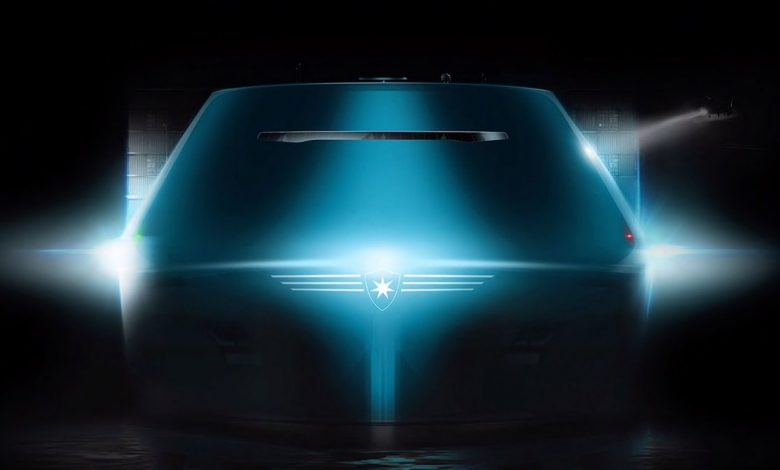Container shipping could go carbon neutral right now

$5.1bn. That’s the surprisingly small cost for the whole liner fleet to go carbon neutral today. Vespucci Maritime’s Lars Jensen explains.
The container shipping sector is clearly beginning to take step towards the IMO 2050 goals of reducing carbon emissions by 50% – and that is 50% of the total emissions, not unit emissions per teu*mile. In practice this means that most of the vessels operating at that time would have to be carbon neutral.
The technology is not yet ready for large vessels, but for smaller vessels it is already here, as evidenced for example by Maersk’s latest statement that they will launch a methanol-fuelled feeder vessel in 2023. The fuel producers are not quite ready either and building carbon-neutral vessels obviously requires that carbon neutral fuel is available. Something of a chicken-and-egg situation.
Furthermore, even if we magically invented the technology to build a carbon neutral vessel at any size tomorrow, and even if the fuel was available, no-one would envision a scenario where more than 6,000 container vessels are scrapped overnight – much less that you could build that many ships in a hurry.
It would therefore seem that aiming for 2050 as a carbon neutral target is more realistic despite hopes and aspirations to do it sooner. But we could also be thinking about this the wrong way.
The IMO Digital Collection System is set up for shipping lines to report CO2 emissions. For 2019 they arrive at total emissions of 614m tons, hereof 30% from container shipping. This means 184m tons for the container shipping lines.
In round numbers, the industry moved 170m teu loaded with cargo in 2019, which makes for emissions of 1.08 ton of CO2 per teu. Of course, containers on longer trips caused more emissions than containers on short trips. Containers on small fuel-inefficient vessels caused more emissions than containers on larger more modern vessels. But that is simply a discussion of how to apportion the emissions to the individual containers. The totality is the same regardless of how it is then split on single containers.
Increasingly the market is seeing the use of carbon offsets – investing money in projects which have proven to reduce carbon emissions. This approach is even used in container shipping as well – just as two examples, MSC offers to offset emissions this way through collaboration with South Pole and Kuehne+Nagel has their Net Zero Program also using carbon offsets with a range of providers.
What does it cost? Clearly, that depends on the projects being supported with some being more or less expensive and some being more or less effective. And, yes, one should be cautious about pure greenwashing projects. As an example, German Atmosfair has a price for offsetting the 1.08 tons matching a teu of approximately $30.
Scaling this up to a global perspective, the entire container shipping industry could go carbon neutral as of right now at a cost of $5.1bn.
Whilst that sounds like a high number, it is instructive with some context in the container shipping industry. In 2020, the added cost of low sulphur fuel from IMO2020 was $5.7bn – which was incidentally much less than the $10bn to $15bn anticipated prior to 2020. But one should be clear here: This added cost is not shouldered by the carriers – it is passed onto the shippers and, ultimately, to the consumers. The same would be the case of a carbon offset.
Hence, we are at a point where the industry in a very real sense could go carbon neutral tomorrow. But it would entail three things.
First, the shippers would need to shoulder part of the cost – and eventually get this passed onto the consumers. This should of course be seen in the context of the normal rate levels and not from the extremely elevated rate levels in the currently warped market.
Secondly, it would in essence require all carriers to start doing it, as otherwise carriers not doing it would have a distinct cost, and hence pricing, advantage.
Thirdly, whilst you can buy offsets for smaller emissions, doing it at this scale would need careful thought in terms of the projects’ short and long term viability.
This article first appeared in Maritime CEO magazine, published this week. Splash readers can access the full magazine by clicking here.

The final price that everyone will have to pay is precisely what demagoguery always hides.
Scaling this up to a global perspective, the entire container shipping industry could go carbon neutral as of right now at a cost of $5.1bn.
With the current profit levels being recorded in liner shipping, a cost of $ 5.1 billion is small change (ONE alone is said to have made $ 3.5 billion).
Just this week it was reported that the Courts in Karlsruhe had ruled that de-carbonisation laws started in 2019 must already be in place and that this could not be postponed decades into the future, so Maersk, CMA, Hapag, COSCO and all you others out there – start spending some of your BILLIONS of profit on getting carbon neutral NOW – not putting it off until most of us have retired.
Let’s be having you.
Anyone in shipping who still believes that “carbon offsets” are the answer to anything, given how very easy it is to fiddle them, is hopelessly naive or seriously dishonest.
Experience teaches us that there are very few hopelessly naive people in shipping..